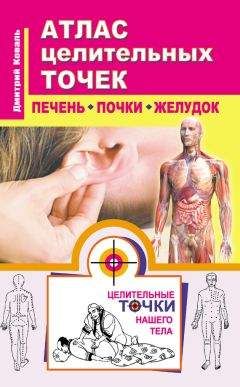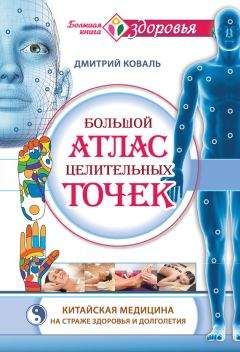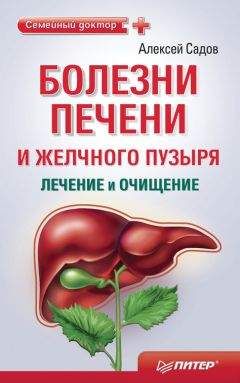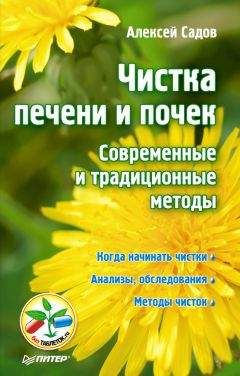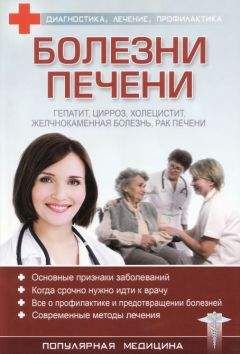Кэрол Уилсон - Исцеляющая сила без медицины. Руководство к преодолению жизненных препятствий и возвращению радости
Raingruber, B. & Robinson, C. (2007), «The effectiveness of tai chi, yoga, meditation, and Reiki healing session in promotion health and enhancing problem solving abilities of registered nurses». Issues in Mental Health Nursing, 28, 1141–1155.
Rand, W. (2002), «Are distant attumements effective?» http://www.reiki.org/fag/distantattumements.htm
Rinpoche, K. (1995a), Profound Buddhism. San Francisco: ClearPoint Press.
Rinpoche, K. (1995b), Excellent Buddhism. San Francisco: ClearPoint Press.
Shantideva (2003), The Way of Bodhisattva. Boston: Shambhala.
Shearly, N. (1998, June 20), Acceptance speech upon receipt of the Alyce & Elmer Green Award for Excellence, 8th annual conference of ISSSEM, Boulder, CO.
Shore, A. (2004), «Long Term effects of energetic healing on symptoms of psychological depression and self-perceived stress». Alternative Therapies in Health and Medicine, 10(3), 42–48.
Sunday Star Times (2008, August 28) «Olimpics: Hayden Roulston Lone Rider».
Tsang, K., Carlson, L. & Olson, K. «Pilot crossover trail of Reiki versus rest for treating cancer related fatigue». Integrated Cancer Therapy, 6(1), 25–35.
Usui, M. & Petter, F. A. (1999), The Original Reiki Handbook. Shangri-la: Lotus.
Vitale, A. & O’Connor (2006), «The effect of Reiki on pain and anxiety in women with abdominal hysterectomies». Holistic Nursing Practice, 20(6), 263–272.
Vitale, A. T. (2009), «Nurses lived experience for Reiki for self care». Holistic Nursing Practice, 23(3), 129–145.
Wardell, D., & Engelbretson, J. (2001), «Boilogical correlates of reiki touch healing». Journal of Advanced Nursing, 33(4), 439–445.
Whelan, K., Wishnina, G. (2003), «Reiki therapy: the benefits to a nurse/Reiki practitioner». Holistic Nursing Practice, 17(4), 209–217.
Wirth, D., Brenlan, D., Levin, R. et. al. (1993), «The effect of Complementary healing therapy on postoperative pain after surgical removal of impacted third molar teeth». Complementary Therapies in Medicine, 1, 133–138.
Wisneski, L. & Anderson, L. (2009), The Scientific Basis of Integrative Medicine. Baca Raton: CRC Press.
Witte, D. & Dundes, L. (2001), «Harnessing life energy or wishful thinking? Reiki, placebo Reiki, meditation amd music». Alternative and Complementary Therapies, 7(5), 304–309.
Глава 9Aruna, K. & Sivanaranankrishnan, V. (1996), «Anticarcinogenic effects of the essential oils from cumin, poppy and basil». Phytotherapy Research, 10, 577–580.
Basset, I., Pannowitz, D. & Barnetson, R. (1990), «A comparative study of tea-tree oil versus benzoyl peroxide in the treatment of acne». Medical Journal of Australia, 153(8), 455–458.
Bradshow, R., Phil, D., Marchant, J. et. al. (1991), «Aromatherapy: evidence for sedative effects oh the essential oil of lavender after inhalation». Z Naturforsch [C]. 46(11–12), 1067–1072.
Buck, D., Nidorf, D. & Addinno, J. (1994), «Comparison of Two Topical Preparations for the Treatment of Onychomycosis: Melaleuca alternifolia (Tea Tree) Oil and Clotrimazole». The Journal of Family Practice, 38, 601–605.
Buckle, J. (1999, Sept.), «Use of Aromatherapy as complementary treatment for chronic pain». Alternative Therapies in Health and Medicine, 65(5), 42–51.
Buckle, J. (2001), «The role of aromatherapy in nursing care». Northing Clinics of North America, 36(1), 57–72.
Cai, L. & Wu, C. (1996), «Compounds from Syzygium aromaticum possessing growth inhibitory activity against oral pathogens». Journal of Natural Products, 59(10), 987–990.
Carlson, C. & Riley, J. (1995), «Atimicrobial activity of the Major components of the essential oil of Melaleuca alternifolia». Journal of Applied Bacteriology, 78(3): 264–269.
Chaiyakunapruk, N., Kitikannakorn, S., Nathisuwan, K. et. al. (2006), «The efficacy of ginger for the prevention of postoperative nausea and vomiting: A meta-analysis». American Journal of Obstetric and Gynecology, 194(1), 95–99.
Chao, S., Young, D. & Oberg, C. (2000), «Screening for inhibitory activity of essential oils on selected bacteria, fungi, and viruses». Journal of Essential Oil Research, 12, 639–649.
Covello, M., Ciampa, G. & La Rotonda, M. (1996), «Determination of eugenol in the essence Of Eugenia caryophyllata Titration in non-aqueous solvent and comparison with other methods of analysis». Bom Chim Farm, 105(11), 799–806.
DeMarco, C. (2005, January) “In pursuit of true aromatheraphy”. Alive. #257.
Dember, W. (1994) U.S.A. Parasuraman, Compendium of Olfactory Research.
Essential Science Publishing (2008), Essential Oils Pocket Reference. Orem, UT: Essential Science.
Farag, R., Daw, S. & Abo-Raya (1989), “Influence of some spice essential oils on Asperigillus parasiticuss growth and production of aflatoxins in a synthetic medium”. Journal of Food Science, 54(1), 74–76.
Farag, R., Badei, A., Hewedi, F. et. al. (1989, June), “Anioxidant activity of some spice essential oils on linoleic acid oxidation in aqueous media”. JAOCS, 66(6).
Ford, A., Tally, N., Spiegel, B., et. al. (2008), “Effect of fibre, antispasmodics, and peppermint oil in the treatment of irritable bowel syndrome: systematic review and metaanalysis”. British Medical Journal, DOI: 10.1136/bmj.a2313.
Friedmann, T. (2008), Freedom Touch Health. Northglenn, Co: Harvest Publishing.
Froeber, J (2009, May 15), “Ginger may help chemo patients with nausea”. Atlanta: CNN.com/health.
Gattefosse, R. (1996), Aromatherapy: The First Book on Aromatherapy (Ed. Tisserand, R.), New York: Random House.
Gobel, H., Schmidt, G. & Soyka, D. (1994), “Effect of peppermint and eucalyptus oil preparations on neurophysiological and experimental algesimetric headache parameters”. Cepahlagia, 14(3), 228–234.
Gobel, H. (1996, August), “Effectiveness of oleum menthae piperitae and paracetamol in therapy of the headache tension type”. Nervenarzt, 76(8), 672–681.
Greenwood, B. (2009, May 26), “Essential oils and aromatherapy in nursing”. Natural Medicine.
Halm, M. (2008), “Essential oils for management of symptoms in critically ill patients”. American Journal of Critical Care, 17, 160–163.
HealthDay (2005, June 2008), “Can ginger combat chemo-induced nausea?” University of Michigan Health System news release. Retrieved http://news.healingwell.com/index.php?p=news1&id=526670
Hildegard, D. (1998), Physica. Santa Fe: Inner Traditions Bear and Company.
Hirsch, A. (1994), “Inhalation of odorants for weigh reduction”. Internal Journal of Obesity, 306.
Hirsch, A. & Johnston, L. (1996), “Odors and learning”. Journal of Neurological and Orthopaedic Medicine and Surgery, 17, 119–126.
Imai, H., Osawa, K., Yasuda, H. et. al. (2001), “Inhibition by the essential oils of peppermint and spearmint of the growth of pathogenic bacteria”. Microbios, 106(1), 31–39.
Job 8:12. The Holy Bible. New York: World Publishing.
Kannelou, V. (20034, November), “Ancient Greek medicine as the foundation of contemporary medicine”. Techniques in Colonpractology, 8(1), s3–s4.
Keegan, L. (2003), “Therapies to reduce stress and anxiety”. Critical Care Nursing Clinics of North America, 15(3), 321–327.
McDowell, B. (2005), “Nontraditional therapies for the PICU, part 1”. Journal of Speacity Pediatric Nursing, 10(1), 29–32.
National Cancer Institute (2010), “Aromatherapy and essential oils (PDQ)”. Washington, D.C.: U.S. National Institutes of Health.
Nehamas, A. & Woodroof, P. (2005), Plato Phaedrus. Indianapoils: Hackett Publishing.
Nenoff, P., haustein, U. & Brandt, W. (1996), “Anfifugal activity of the essential oils of Melaleuca alternifolia (tee tree oil) against pathogenic fungi in vitro”. Skin Pharmacology, 9(6): 388–394.
Nikolaevskii, V., Kononova, S., Petrsoviskii, I. et. al. (1990, Sept.-Oct.), “Effect of essential oils on the course of experimental atheroscerlosis”. Patologicheskai Fiziologiz Eksperimentalnaia Terapiia, (5), 52–53.
Olse, C. (1997), Australian Tea Tree Oil Guide. Colorado: Kali Press.
Parch, L. (2008, May 19), “Complementary (alternative) breast cancer therapies for side effects and stress”. health.com. Retrieved http://www.health.com/health/condition-article/0,20188906,00.
Pemberton, E. & Tupin, P. (2008) “The effect of essential oils on work-related stress in intensive care unit nurses”. Holistic Nursing Practice, 22(2), 97–102.
Raman, A., Weir, U. & Bloomfield, S. (1995) “Antimicrobial effects of tea tree oil and its major components on Staphylococus aureus, Staphylococus epidermics and Staphylococus acnes”. Letters in Applied Microbiology, 21, 242–245.
Shapiro, S., Meier, A. & Guggenheim, B. (1994), “The antimicrobial activity of essential oils and essential oil components toward oral bacteria”. Oral Microbiology Immunology, 9(4): 202–208.
Siurin, S. (1997), “Effects of essential oil on lipid peroxidation and lipid metabolism in patients with chronic bronchitis”. Klinicheskaia Meditsina, 75(10), 43–45.
Stewart, D. (2003), Healing Oils of the Bible. Marble Hill: CARE Publications.
Stewart, D. (2003b), A Statistical Validation of Raindrop Technique. Marble Hill: care Publications.
Stewart, D. (2005), The Chemistry of Essential Oils Made Simple. Marble Hill: care Publications.
Tan, B. & Vanitha, J. (2004), “Immunomodulatory and anticrobial effects of some traditional Chinese medicinal herbs: A review”. Current Medicinal Chemistry, 11, 1423–1430.
Veal, L. (1996, August) ”The potential effectiveness of essential oils as a treatment for head lice, Pediculum humanus capitis”. Complementary Nursing Midwifery, 2(4), 97–101.
Young Living Essential Oils 2006), Essential oils usre’s guide. Lehi, UT: YLEO.
Глава 10Nydahl, O. (2003, June 11), “Letters announcing the death of Lopon Thechu Rinpoche”. Karma Guen, Spain.
Примечания
1
В традиционной индуистской мифологии дакини – демонические существа женского пола, составляющие свиту богини Кали. Это злобные и вредоносные духи женского пола, которые пьют кровь младенцев, насылают на людей безумие, портят скот и причиняют множество бедствий. В учениях буддийских тантрических школ дакини – спутницы божеств. Несмотря на свой зачастую гневный или уродливый облик, считаются воплощениями женского начала и почитаются как защитницы стремящихся к Пробуждению и носительницы высшего знания. – Здесь и далее примеч. ред.
2
Упанишады – древнеиндийские трактаты религиозно-философского характера. В них в основном обсуждается философия, медитация и природа Бога.
3
Ригведа (санскр. «веда гимнов») – собрание преимущественно религиозных гимнов, первый известный памятник индийской литературы. Ригведа была составлена, видимо, около 1700–1100 гг. до н. э.
4
Символ бренда «Camel». – Примеч. пер.
5
Тайленол – анальгетик.
6
Гидрокодон (гикодан, лортаб, викодин, туссионекс) – эффективное обезболивающее и противокашлевое лекарство. По опасности привыкания сравним с кодеином. Длительный прием гидрокодона в больших дозах может вызвать слабую эйфорию, а в дальнейшем – болезненное пристрастие. Оксикодон – лечебный анальгетик, синтезируемый из опиума. В качестве болеутоляющего его используют вместе с аспирином или парацетамолом. Также вызывает привыкание. В США, так же как и в России, его оборот ограничен и контролируется соответствующим законодательством.
7
Талидомид – седативное снотворное лекарственное средство, получившее широкую известность из-за своей тератогенности, после того, как было установлено, что в период с 1956 по 1962 годы в ряде стран мира родилось по разным подсчетам от 8000 до 12 000 детей с врожденными уродствами, обусловленными тем, что матери принимали препараты талидомида во время беременности.
8
Синдром отмены – реакция организма, возникающая при прекращении или снижении приема лекарственного препарата и проявляющаяся ухудшением состояния пациента: развитием симптомов или состояний, на устранение которых было направлено действие лекарственного средства, а нередко и возникновением качественно новых симптомов или состояний, отсутствовавших у пациента ранее.
